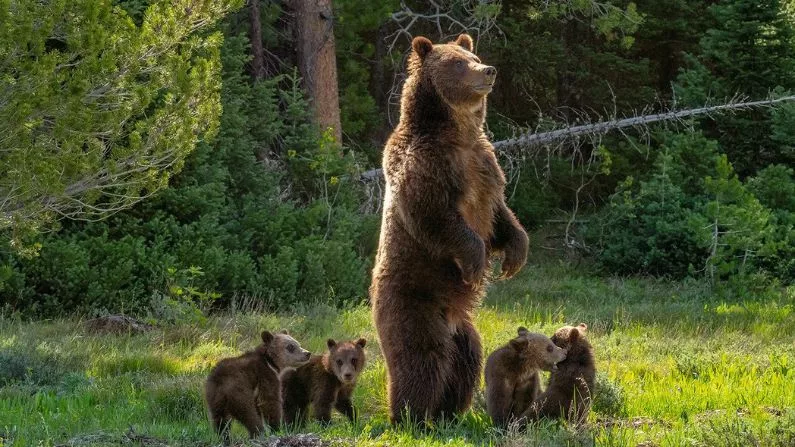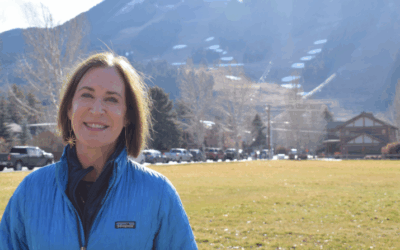Legendary Jackson-based photographer Thomas Mangelsen is out with a new book on his favorite subject — Grizzly 399. Environmental journalist Todd Wilkinson, of the recently shuttered Mountain Journal, wrote the text.
Mangelsen has photographed the mama bear for over 17 years. This book is a visual tribute to not just 399 and her many cubs but to the recovery of the grizzly population in the Greater Yellowstone Ecosystem. Mangelsen’s photography is often credited with making the public care about animals.
The publication of this book comes at an auspicious moment. The federal government will soon decide whether to remove grizzlies from the endangered species list, as their numbers are up. Wyoming, Montana and Idaho are all in favor of “delisting” grizzlies. Mangelsen is vocally opposed.
“Well, what? What is enough? There were 50,000 grizzly bears in the continental United States [before European colonization] and now there are somewhere around two or 3,000,” Mangelsen said.
Wilkinson, the writer, questioned the premise that grizzlies are liabilities. He said that the resurgence of the grizzly population has added more value to the economy than hunting would.
“We know that nature tourism generates about a billion and a half dollars annually,” argued Wilkinson. “And guess what? Two of the marquee attractions are grizzly bears and wolves.”
Grizzly 399 has largely been at the heart of this success. She has been a visible presence in Grand Teton National Park and Jackson Hole for more than a quarter century.
“We will protect what we love and what we care about. And in order to care about something, we have to see it,” Wilkinson said.
Back when Mangelsen moved to Jackson in 1978, grizzly sightings were quite rare.
“I had to go to Alaska to see a grizzly bear. [It was] very rare to see a grizzly bear in Yellowstone. That was a big, big deal. There were probably only maybe 150, 200 bears,” Mangelsen explained.
According to Mangelsen and Wilkinson though, Grizzly 399 has been a game-changer in how the world has come to understand the bruins. They said she has cut against the mythology of bears as a nuisance that needs to be subdued.
“This isn’t whoa, animal rights stuff. These are highly intelligent creatures that make their living out in wild, very difficult places,” Wilkinson said.
Mangelsen and Wilkinson argue that the resurgence of the species showed that humans and bears can coexist.
“Prior to 399 arriving, I don’t think many people either appreciated that fact or they were incredulous that it was actually possible,” Wilkinson said.
The book features nearly 200 images of Grizzly 399 and her cubs. It’s been a slow and committed process, they said, often requiring early mornings in cold and wet conditions.
“I love it when there are clouds in the sky and nasty conditions — rain, snow,” explains Mangelsen. “It mutes the light, for one thing. It adds drama and adds mood, especially fog.”
“Some of my best pictures were taken when I was not very comfortable out there,” he added.
Listen above for an interview with Mangelsen and Wilkinson.






